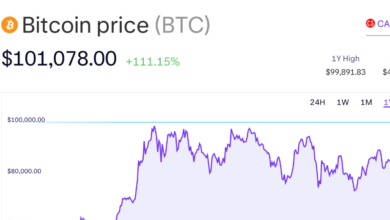Recruitment ROI Efficiency: Practical Strategies for Modern Hiring

Recruitment in today’s highly competitive, rapidly shifting market is about much more than just matching resumes to open positions. Organizations now face mounting pressure to innovate, attract exceptional talent, and minimize wasted spend—all while delivering measurable business value. The drive for efficient hiring practices has evolved into a crucial pillar of overall business competitiveness, allowing companies not only to secure high performers but to do so at a sustainable cost. Adopting structured recruitment processes, building an authentic employer brand, and harnessing advanced technology are now seen as essential levers for improving both hiring outcomes and ROI. These efforts not only yield superior results in securing talent that is aligned with business objectives but also foster a culture where recruitment is a genuine source of value creation and growth.
An optimized recruitment strategy does more than just shorten time-to-hire and reduce cost per hire—it ensures that each dollar spent is strategically targeted to deliver maximum organizational impact. Forward-thinking businesses achieve this through a relentless focus on metric-driven decision-making, a dedication to refining the candidate journey, and an openness to adopting practices proven to enhance sourcing success and employee longevity. By moving beyond reactive recruitment and embedding efficiency into every step, organizations set new industry benchmarks and build lasting talent pipelines that scale with the business.
Understanding Recruitment ROI
Recruitment ROI is a comprehensive measure of how successfully the money, time, and resources invested in hiring translate into organizational goals, productivity, and performance. Businesses are increasingly tracking specific, actionable metrics to reveal gaps, gauge progress, and inform their ongoing strategy, making recruitment a strategic function rather than a transaction. Among the most critical indicators are:
- Cost per Hire (CPH): The totality of all recruitment expenses, including advertising, agency fees, recruiter hours, and associated costs, divided by the number of successful hires. This metric allows organizations to evaluate the tangible financial efficiency of their hiring practices.
- Time to Hire: The number of calendar days from when a job vacancy is posted to when an offer is accepted—a direct measure of how nimble, responsive, and effective the recruitment process is.
- Quality of Hire: Often assessed through a combination of new hire performance, productivity within the first year, retention rates, and feedback from managers, this metric provides insight into how well new contributors support business priorities post-hire.
Systematic and regular monitoring of these core indicators enables HR leaders to identify inefficiencies before they become costly, allocate resources where they have the greatest impact, and iteratively refine recruitment strategies to deliver maximum value to the business.
See also: Benefits of Outsourcing Fulfillment Services for Your Business
Implementing Structured Hiring Processes
A structured hiring process is foundational to hiring consistency, organizational fairness, and business predictability. By following a well-defined set of procedures, companies can significantly reduce risks tied to unconscious bias, misaligned hires, and process breakdowns, resulting in stronger teams and greater hiring ROI. Key steps in a disciplined, structured process include:
- Define Clear Job Requirements:Developing detailed, accurate job descriptions for every opening clarifies the skills, experiences, and attributes that are essential for success. This upfront investment lets organizations target the right pool of talent and ensure reliable, consistent screening throughout the recruitment cycle.
- Standardize Interview Questions:Using a defined set of role-specific questions for each position eliminates randomization and subjectivity from interviews, improves fairness, and facilitates objective comparison of candidates on an equal footing.
- Utilize Evaluation Rubrics: Formal scoring rubrics assign specific values to candidate responses and interview performance across standardized criteria, ensuring decisions are based on structured data rather than gut feelings or snap judgments.
Organizations that embed these practices into their daily recruitment processes enjoy elevated team quality, repeatable outcomes, and the trust that comes from objectivity, thereby building a continual cycle of improvement and stronger, longer-lasting hires.
Leveraging Technology and Data Analytics
Modern recruitment technology has transformed the hiring landscape, enabling HR teams to operate at a faster pace, make more informed decisions, and automate routine manual tasks. Key tools and technologies for boosting hiring efficiency and ROI include:
- Applicant Tracking Systems (ATS):These platforms serve as the digital backbone of recruitment, automating repetitive administrative tasks such as resume parsing, application filtering, and candidate progression tracking, streamlining the end-to-end process for both recruiters and applicants.
- AI-Powered Tools: Artificial intelligence now enables rapid, objective candidate screening, automated scheduling, and advanced skills matching, freeing recruiters to focus on building rapport and assessing deeper fit. AI assessments can also identify promising talent from previously overlooked sources, thereby increasing diversity and efficiency.
- Data Analytics: Real-time tracking of key performance indicators, candidate sourcing channels, and campaign outcomes enables teams to identify what’s working, pinpoint bottlenecks, and direct hiring resources to high-ROI activities.
Enhancing Employer Branding
A compelling employer brand is a powerful magnet for top candidates, making it easier—and more cost-effective—to attract and retain high-performing employees. Strong employer branding goes beyond surface-level perks; it aligns organizational values and authentic stories with what today’s workforce seeks in an employer. Core strategies to elevate branding include:
- Showcase Company Culture:Consistently highlight unique cultural aspects and employee journeys via careers pages, social media, and digital events, offering candidates a genuine window into life at the organization.
- Highlight Values and Mission:Transparent communication around organizational purpose, growth mission, and social responsibility signals to candidates that your organization is not only a great place to work but also one with a higher calling.
- Engage on Social Media: Participate in relevant conversations, share behind-the-scenes content, and recognize team and individual achievements publicly to build a connected and visible talent community.
As noted in Forbes, a well-executed employer branding strategy not only fosters stronger employee engagement but also significantly improves recruiting outcomes. Research supports the enormous value of employer branding. Businesses with strong employer brands realize a 50% reduction in cost-per-hire and double the volume of qualified applicants, positioning your business to compete for in-demand candidates with greater efficiency.
Focusing on Candidate Experience
Delivering a positive candidate experience affects not only individual hiring success but also broader employer reputation and the likelihood of ongoing talent referrals. Each interaction presents an opportunity to demonstrate the organization’s values and commitment to respectful, transparent processes. Best practices for optimizing candidate experience include:
- Transparent Communication: Keep candidates informed about their application status, next steps, and timelines. Proactive communication, even if the news is disappointing, earns lasting respect and trust.
- Efficient Processes: Streamline applications, interviews, and decision timelines to minimize frustration and maximize engagement. Candidates who perceive your process as efficient are more likely to accept offers and recommend your company to others.
- Constructive Feedback: Offer useful feedback, including to those not hired, reinforcing your commitment to people development and leaving a positive impression that can pay dividends in future hiring campaigns.
A superior candidate experience has a multiplier effect—it increases offer acceptance rates and leads to more referrals from those who were impressed, even if they weren’t selected, driving ongoing ROI from each hiring round.
Utilizing Cost-Effective Sourcing Channels
Recruiting through the most efficient channels enables businesses to fill roles more quickly and reduce expenses while expanding access to a diverse talent pool. Leading approaches to sourcing include:
- Employee Referral Programs: Tap into the networks of your existing staff by incentivizing them to refer qualified contacts. Referrals often result in high-quality, well-matched hires at a fraction of the typical sourcing cost. In fact, as highlighted by HRMorning, employee referral programs not only reduce hiring expenses but also improve retention and engagement by bringing in candidates who align well with company culture.
- Social Media Platforms: Engage talent quickly and broadly through professional networks, such as LinkedIn, as well as niche channels relevant to your industry, to create an always-on pipeline of fresh candidates.
- Internal Talent Pools: Build and maintain databases of pre-qualified external and internal candidates, including alumni and employees open to new opportunities. Rapid access shortens time-to-fill and creates resilience for critical positions.
By actively investing in these sourcing channels, organizations build agile, cost-conscious systems that support business growth objectives while reducing reliance on expensive outside agencies or inefficient job postings.
Measuring and Analyzing Recruitment Metrics
Ongoing measurement underpins long-term recruitment improvement. By vigilantly tracking, analyzing, and acting on key hiring data, organizations gain the transparency needed for continuous optimization. Some of the most vital metrics to monitor include:
- Time-to-Fill: Calculating the number of days it takes to hire for each role sheds light on process delays and areas for streamlining.
- Cost-per-Hire: Tracking all accumulated hiring expenses for each filled position guides spending decisions and helps to surface unnecessary expenditures.
- Quality of Hire: Reviewing the early performance, retention, and cultural integration of new hires ensures that recruitment delivers long-term benefits, not just quick fixes.
Robust analysis of these data points enables businesses to refine their strategies, eliminate recurring issues, and maintain high standards for recruitment ROI, ultimately driving ongoing competitiveness and talent momentum.
Conclusion
Maximizing recruitment ROI requires a comprehensive, holistic approach that aligns structured processes, leverages the power of technology, elevates brand presence, employs smart sourcing strategies, and ensures meticulous measurement. By systematically improving each element, organizations can consistently attract, engage, and secure the right talent with minimal waste. In a landscape defined by rapid change and fierce competition for people, those who treat recruitment as a source of strategic advantage will not only fill roles efficiently but also cultivate a thriving workforce poised for ongoing success.





